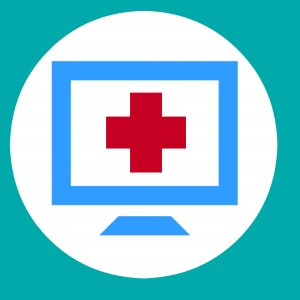
As the HITECH Act’s regulations go into place, healthcare practices must implement eHealth initiatives such as Electronic Health Records (EHR). Besides meeting federal requirements, EHR can, if used properly, provide many benefits for healthcare practices. Reaping those rewards requires careful selection of technology and ensuring that workflow is properly redesigned to support full implementation of the new system. Proper training and efficient use of EHRs not only will streamline documentation but also enable providers to deliver better patient care while enhancing internal and external communication.
Selecting the Right Vendor
To ensure selection of a solid platform and smooth implementation, physicians should consider these points when seeking out a vendor:
- Pick a partner – Buying an EHR system should be the start of a long-term relationship. Choose a vendor that will be a partner in success, one that understands the practice’s culture and long-term vision. The launch is just the beginning of a relationship with a vendor, who must also provide service and support through updates, troubleshooting and more.
- Consider a network – Software based EHR solutions can be useful but are often more challenging due to higher cost, the speed at which hardware becomes obsolescent, upgrade processes and more. Network-based EHR services tend to be more affordable, efficient and offer easier integration with federal requirements.
- Ensure vendor adaptability – The vendor should be able to adapt to the changing needs of the practice while ensuring the practice can do the same.
- Make sure an integrated practice management system is available – A solid product choice will not only help practices better manage patient records, but also include integrated tools to submit billing claims and assist with patient communication.
Getting the Workflow Right
Practices must adjust workflow to maximize the EHR system’s efficiency. They can do this by:
- Documenting the current workflow.
- Creating a flowchart showing each task’s step and who is responsible for them.
- Compare practice operations to industry standards.
- Pinpoint waste and opportunities to improve care and reduce errors.
- Coordinate workflow maps with the new system.
- Put the new workflows into action using communication, training and method auditing.
Tips for Efficient Use
Ensure the EHR system is used efficiently and effectively by:
- Implementing shortcuts – Identify and eliminate repetitive tasks in the HER. Triggers can speed up documentation.
- Talk to the vendor – Communicate the practice’s needs to the vendor to assist with the creation of triggers, templates and shortcuts.
- Select a portal – Add a kiosk in the reception area so patients can input health information as they wait.
- Consider add-ons – Upgrades such as “smart” pens can deliver more efficient use.
- Make sure staff is onboard –Train staff and promote full implementation for more effective and efficient use of the system.
- Stay current – Inform staff of changes and improvements to the system. Stay up to date on your vendor’s new products and services.
- Talk to the team – Discuss the EHR system in meetings to identify opportunities, challenges and frustrations. Relay information to the vendor.
Training for Success, Managing for Success
Consider these training strategies:
- Train “super users” – Choose employees who attend vendor trainings and then train others in the practice.
- Role-based – Tailor training sessions to the needs of staff members’ roles.
- Process-based – Help staff understand and implement new workflows, for example, by showing how the practice will now provide clinical summaries for patients under the new system.
Implementation of new eHealth initiatives can be costly and time-consuming, but can result in more accurate, streamlined operations that benefit both the practice and patients.
Author Bio: Melissa Salm is an outreach specialist with Bisk Education. She writes about health care topics related to health informatics for the University of South Florida’s Morsani College of Medicine.






